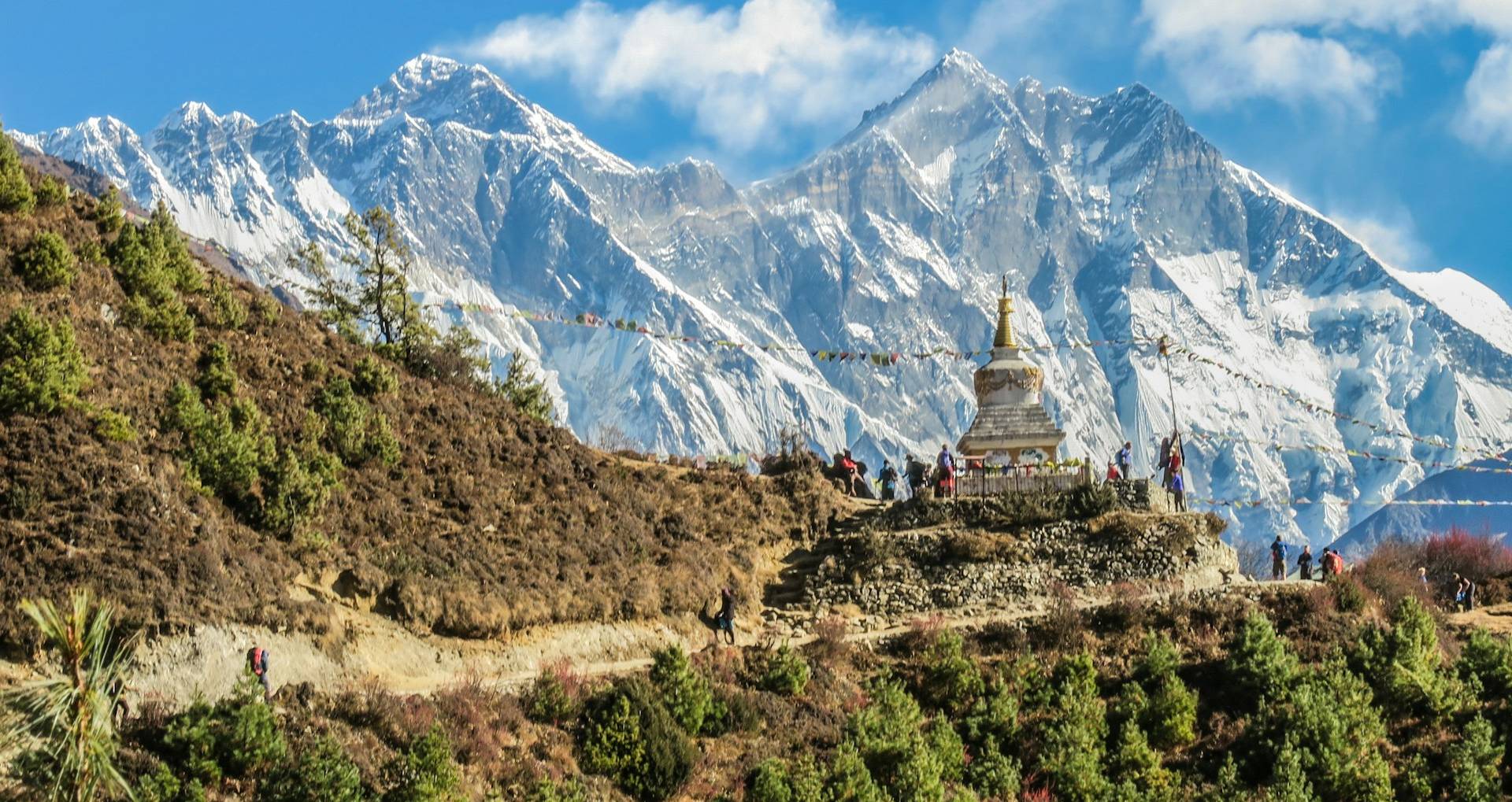As countries are locked down and borders are closed, Radhika Halder (Independent Researcher, Nepal) analyses the implications for such changes on the Nepal-India border, and what questions the epidemic raises about the management of the 1,800km border.
As the world adjusts to cope to life with COVID-19, governments across South Asia (even those with a low number of detected cases), have implemented strict lockdowns, sealing their borders. For landlocked Nepal, this has translated into the sealing of its borders with India and China.
The Armed Police Force (APF) of Nepal is responsible for implementing pandemic-related border closures, enforcing the ban on non-essential travel, and the movement of goods. These drastic actions have brought border management issues to the fore, reminding the globalised world of the continued significance of borders.
Furthermore, border disputes between Nepal and its neighbours have long been an issue. The most recent dispute was India’s inauguration of a Himalayan road passing through Lipulekh, a disputed tri-junction with Tibet and China. Given this recent dispute, and the sealing of borders thanks to the pandemic, an opportunity to clarify the roles and responsibilities of agencies and stakeholders related to border management in Nepal has arisen.
Nepal-India Border
Nepal is bordered by India to the south, east and west for approximately more than 1,800 km with designated points of entry and exit. The Nepal-India border is a fence-less, porous border and the movement of people and goods gets checked by customs and immigration only at each of these designated points. Nepal imports nearly two-thirds of all its needs through this border, which includes products of daily consumption, including food items, raw industrial materials, and petroleum products.
In addition to trade, there is frequent movement of people across the border on a daily basis because of established social and familial ties on both sides. An estimated 279,000 Nepali seasonal migrant laborers work in India and regularly cross the border to and from work. Similarly, many Indian migrant labourers work seasonally in Nepal. The pandemic-related border closure has caused major disruption, with several thousands of workers now stranded along both sides of the border on their way home.
The openness of the Nepal-India border has long been exploited for terrorism, smuggling, narcotics and human trafficking, and other illegitimate purposes. Nepal has periodically faced questions about lax border controls and lenient immigration systems. Custom services are not integrated with immigration and critical databases linking passengers and goods entering Nepal is yet to be introduced. The US Department of State’s Country Report on Terrorism 2018 highlighted the lack of efficient security controls as a result of which “Nepal has been, and could continue to be, used as a transit or staging point for international terrorists”.
The new cases of COVID-19 being reported in Nepal suggest that the border with India is being breached despite the lockdown. The porous border also enables the spread of rumours and conspiracy theories. As borders represent national identity, information on them must be kept in the public domain to prevent such misinterpretation. Border-related issues can often succumb to a false sense of populist jingoism, playing into the hands of troublemakers and agenda seekers. This is particularly important for the Nepal-India border where not only the state-to-state relations, but also the people-to-people ties, are deeply affected. Thus, a clear and commonly understood notion of the border that resonates across the state and people alike is extremely crucial, especially during crises, where the lack of such an understanding could have serious negative impact on Nepal-India relations and border diplomacy.
As such, Nepali border management policy makers are faced with a dilemma. On one hand, they must be sensitive in accommodating the borderland communities in a strategy that preserves the legitimate flows of people and goods. On the other hand, border management strategies should counter and pre-empt security threats. This ‘border paradox’ requires borders to serve the purpose of walls and also present themselves as gates.
Key Questions for Border Management
COVID-19 presents an opportunity to frame key policy questions to inform and better manage Nepal’s border with India in the face of growing insecurity, ineffective management and the challenge of crisis resilience.
Perception
The most important policy consideration regarding border management in Nepal is the priority given to it in the country’s National Security Policy which was revised in 2019. Shared cultures of communities and trade practices have often contradicted modern boundaries as human action cannot fully be constrained by boundary lines. For instance, government officials rely on digitised maps to determine the border, which is not available to the borderland population and therefore not abided by them. As such, the digitised version of the border and its actual treatment are contradictory, rendering purely statist border management impractical and unrealistic. As such, the first question for border management policy making regarding its perception would be:
How is the border envisioned in the national security architecture of Nepal? What are the disputed territories and how are these treated? Is this information publicly available?
Mandate
During the lockdown, the APF along the border is responsible for quarantine facilities, health desks, immediate response teams, check points, pickets, patrolling by foot and vehicles, in close coordination with local governments, district administration, and police. Having said that, ad hoc measures in deployment of additional security personnel amid COVID-19 in Nepal along its borders and otherwise, continue to take place. This urges the following questions regarding the mandate of border management in Nepal to be raised:
- Who has the mandate for border management? Is it shared and integrated with multiple agencies?
- What are the functions of border management? Does it involve repurposing existing security agencies or creating a single agency responsible for border management and security? Does the organizational setup of the agency/agencies currently responsible mirror the needs of border management?
- Given the multiple facets of the Nepal-India border, is there need for a coordinating architecture involving both security and other agencies at the border?
While a single agency can be given the overall responsibility of border management, it is often the case that other government agencies will also need to be involved depending on functional expertise and need. Establishing coordination mechanism and integrating systems beforehand will enable smooth functioning during crises.
Inter-departmental coherence
In managing the border, the desirable outcome is public safety and security. This however, does not mean it is solely the responsibility of security and law enforcement agencies. Border security and management entails a shared jurisdiction between security and law enforcement agencies as well as customs and immigration departments, who must also share the same vision of the border, enabling coordination with security agencies and in line with the reality of borderland communities.
The Department of Customs in Nepal comes under the purview of the Ministry of Finance whereas the Department of Immigration comes under the Ministry of Home Affairs. This creates another layer of bureaucracy to deal with ineffective border management. Given this, the following questions become imperative to realise the roles and responsibilities of all departments involved in border management:
- Is there a coherent and commonly understood vision of border management across all agencies involved at the border? What is the framework that guides cooperation and coordination among these?
- How do the mandates of customs and immigration department cohere in border management?
- Are the databases used by customs, immigration, security and law enforcement agencies integrated?
As countries continue to look inwards, implementing lockdowns and sealing borders, the pandemic has reminded us of the existential significance of borders and their management. For Nepal, border management and disputes have been a persistent cause for concern and COVID-19 has signaled the need to revisit border strategies and decisions.
This article gives the views of the author, and not the position of the South Asia @ LSE blog, nor of the London School of Economics. Featured photo: Nepal-India border. Credit: Lev Yakupov, Flickr, CC BY-SA 2.0, Creative Commons.








Such an insightful and in-depth analysis. Great piece!